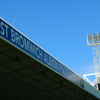that’ll be me...


OF THE DISTINGUISHED SURNAME
HEATHCOCK
The history of the most ancient Anglo/Saxon surname of Heathcock reaches far into the chronicle of the Saxon race. The Saxon Chronicle, compiled by monks in the tenth century, now reposes in the British Museum.
History researchers have examined reproductions of such ancient manuscripts as the Domesday Book (1086), the Ragman Rolls (1291 to 1296), the Curia Regis Rolls, the Pipe Rolls, the Hearth Rolls, parish registers, baptismals, tax records and other ancient documents. They found the first record of the name Heathcock in Derbyshire where they were seated from very ancient times, some say well before the Norman Conquest and the arrival of Duke William at Hastings in 1066 AD.
Different spellings were encountered in the research of your surname. Throughout the centuries your name, Heathcock, occurred in many records, manuscripts and documents but not always with your exact spelling. From time to time the surname was spelt Heathcote, Heathcoat and these variations in spelling frequently occurred, even between father and son. Scribes and Church officials, often travelling great distances, even from other countries, frequently spelt the names phonetically. As a result the same person would be recorded differently on birth, baptismal, marriage and death certificates as well as the other numerous documents recording life?s events.
The Saxon race gave birth to many English surnames not the least of which was the surname Heathcock. The Saxons were invited into England by the ancient Britons of the fourth century. They were fair skinned people originating from the Rhine Valley. Some came from as far northeast as Denmark. They were lead by two brothers, General/Commanders Hengist and Horsa. The Saxons settled in the county of Kent, on the southeast cost of England. Gradually they spread north and westward, and during the next four hundred years forced the ancient Britons back into Wales and Cornwall in the West, and Cumberland to the North. The Angles occupied the Eastern Coast, the south folk in Suffolk, north folk in Norfolk. Under Saxon rule England prospered under a series of High Kings, the last of which was Harold.
In 1066, the Norman invasion resulted in their victory at the Battle of Hastings. In 1070, Duke William took an army of 40,000 north and wasted the northern counties, forcing many rebellious Norman nobles and Saxons to flee over the border into Scotland. Meanwhile, the Saxons who remained in the South were not treated well under hostile Norman rule, and many also moved northwards to the Midlands, Lancashire and Yorkshire away from the Norman oppression.
Nevertheless, this notable English family, Heathcock, emerged as an influential name in the county of Derbyshire where they were recorded as a family of great antiquity seated at Heathcote in the vicinity of Chesterfield with manor and estates in that shire. They later branched into Brampton and Cutthorp in the same shire. Within the next century they had acquired Connington, and Apedale Hall in Staffordshire. They were elected to the peerage and became the Baronets of Normanton and Lords Aveland. Sir W Heathcote was seated at Hursley Park, Wiltshire during the 19th Century. Notable amongst the family at this time was Lord Aveland.
The family Heathcock flourished during the turbulent Middle Ages, contributing greatly to the cultural development of England. During the 15th, 16th, 17th and 18th centuries England was ravaged by plagues, famine and religious conflict. Protestantism, the newly found political fervour of Cromwellianism and democratic government, and the remnants of the Roman Church rejected all non-believers, each jealously claiming adherents to their own cause. The changing rule resulted in burnings, hangings and banishments of all sects and creeds, first one then another. Many families were freely ?encouraged? to migrate to Ireland, or to the ?colonies?. Some were rewarded with grants of lands, others were banished.
Some families were forced to migrate to Ireland where they became known as Adventurers for land in Ireland. Protestant settlers ?undertook? to keep the faith, being granted lands previously owned by the Catholic Irish. There is no evidence that the family name migrated to Ireland, but this does not preclude the possibility of their scattered migration to that country.
The New World offered better opportunities and some migrated voluntarily, others were banished, usually for religious reasons. Some left Ireland disillusioned with promises unfulfilled, but many left directly from England, their home territories. Some also moved to the European continent.
Members of the family name Heathcock sailed aboard the huge armada of three masted sailing ships known as the ?White Sails? which plied the stormy Atlantic. These overcrowded ships such as the Hector, the Dove and the Rambler, were pestilence ridden, with up to 30% or 40% of the passenger list never reaching their destination.
Amongst the first settlers in North America, who could be considered a kinsman of the surname Heathccock, or a variable spelling of that family name was John Heathcoate, settled in Jamaica in 1685; Jasper Heathcoat, settled in New England in 1850; Edward Heathcote, settled in Virginia in 1721; along with James, Joseph and Martin Heathcote, settled in Pliladelphia in 1841.
From the port of entry many settlers made their way west, joining the wagon trains to the prairies or to the west coast. During the American War of Independence, many loyalists made their way north to Canada about 1790, and became known as the United Empire Loyalists.
Contemporary notables of this surname Heathcock, include many distinguished contributors, Heathcoat Avery, Viscount Amory; Brigadier Simon Heathcote; Sir Michael Heathcote, Earl of Ancaster; Clifford Heathcoat Smith, Diplomat.
During the course of our research we also determined the many Coat of Arms granted to different branches of the family name.
The most ancient grant of a Coat of Arms found was:
Ermine with three pommels on each of which is a cross.
The Crest was:
A pommel emerging from a crown

What you should know
Name:
IAN
CAmera
Nikon D50 and Nikon S8000
Pastimes
Photography, West Brom and Football Coaching
Favorite Vacation Spot:
Donegal, Ireland
My Latest Photos




Contacts:
FAMILY HISTORY